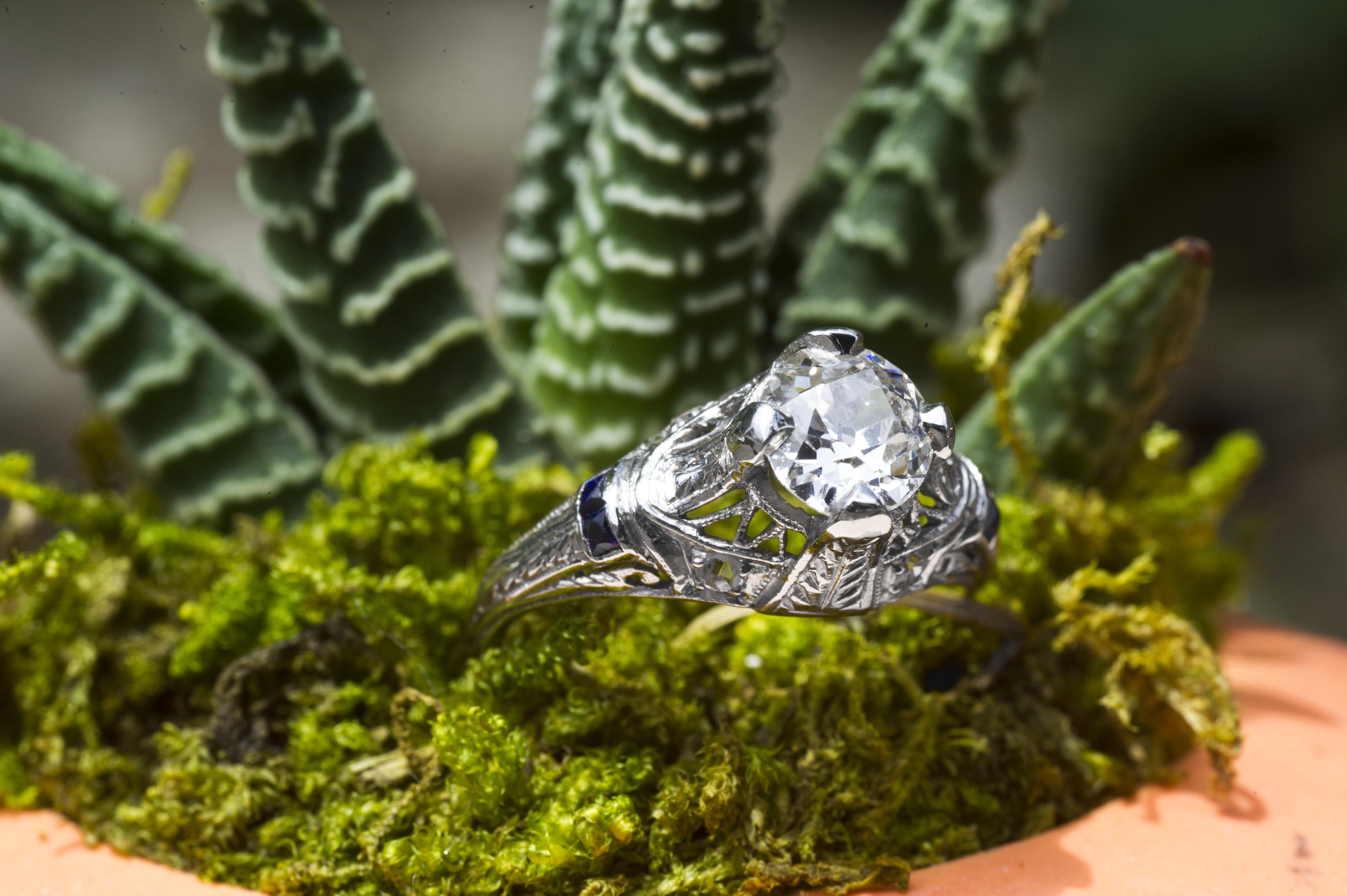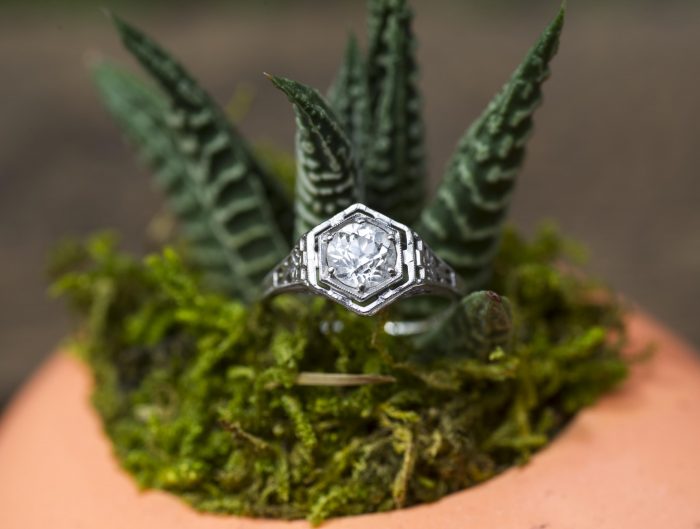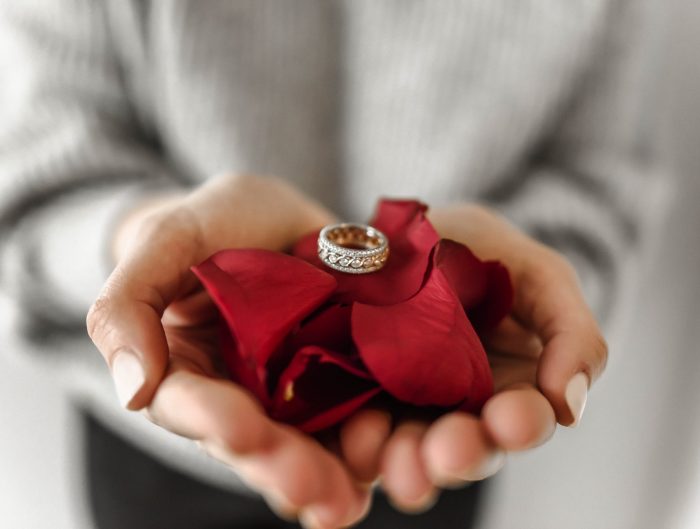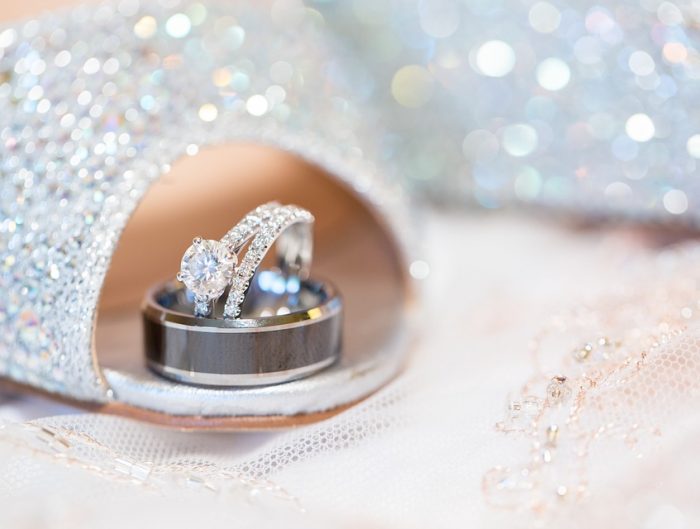Buying an antique wedding or engagement ring can be an intimidating task, especially if you are not familiar with antique jewelry. Historic jewelry has a special appeal, as these pieces tell a story like no other piece of jewelry does. Many vintage rings are exquisitely crafted pieces with rich history. You will appreciate the uniqueness of your ring even more by knowing some of that history.
Antique wedding and engagement rings can be divided into several categories or eras they belong to. Each of these periods has different signature trademarks, like the materials used or the type of ornamentation, and these are what helps us classify antique wedding and engagement rings.
Georgian Period
Named after four kings who ruled England at the time, namely George I through George IV, Georgian rings originated between 1714 and 1837. Pieces from this period are unique and handcrafted, as they predate mass production techniques.
The rings were heavily inspired by nature and featured shapes of birds, leaves and insects. Therefore, they are a perfect match for any nature lover with a penchant for unique jewelry.
Victorian Period
These rings were produced during the reign of Queen Victoria, from 1836 to 1901. The jewelry of the time was heavily influenced by romanticism and featured hearts and bows. However, the majority of Victorian rings still featured elements inspired by nature like flowers and birds, as in the Georgian period. Rings originating from the Victorian era are difficult but not impossible to find.
As far as gemstones are concerned, opal was the favored choice. However, around 1867 huge deposits of diamonds were discovered in South Africa, and diamonds became a popular choice for Victorian rings crafted after that time.

Edwardian Period
Rings crafted between 1895 and 1914 belong to the Edwardian period. These rings are characterized by an incredible level of craftsmanship. The most prominent materials during this era were platinum, diamonds, and exotic gemstones. The more sophisticated platinum manufacturing techniques that had been developed ensured that all rings from this period were made exclusively from this metal.
The rings were often decorated with natural pearls and platinum ornaments, which makes these pieces very graceful and elegant.
Art Deco Period
Influenced by the turbulent 1920’s, the Great War and Great Depression, the Art Deco period marked a huge change in style. In fact, rings originating from this period are much closer to the engagement and wedding rings we know today.
These rings feature bright colors and straight lines. White gold was also introduced during this period. Art Deco rings are edgy and detailed and feature gemstones such as rubies, sapphires and emeralds.

Retro/Mid-Century Period
Rings made during this era were also heavily influenced by the Great Depression, as well as World War II. Since platinum was unavailable between 1935 and 1950 when these rings were produced, jewelers used other metals like gold, white gold or a combination of both. This period also saw the rise of the use of synthetic sapphires and rubies in jewelry.
These rings were made to make a great impression despite the lack of resources, which is why these rings used square shapes and setting illusions that made the gemstones appear larger.
Famous jewelers like Cartier, Tiffany & Co. and Van Cleef & Arpels all started out during this era. Their jewelry adorned the hands of many celebrities at the time. If you are passionate about the retro style, the engagement rings from this era are a perfect match for you.
Looking for Antique Rings for Sale?
Choosing an antique or vintage engagement or wedding ring is easier when you decide which one of these eras fits your style the most. Antique rings are a fantastic choice, as they are unique and as each piece tells a different story.
If you are looking to buy antique rings, visit Leo Hamel Fine Jewelry & Engagement Ring Store at our luxurious San Diego Avenue showroom. We would love to help you pick out a vintage ring that you or your loved one will wear with pride while contributing to a new chapter in its history.






